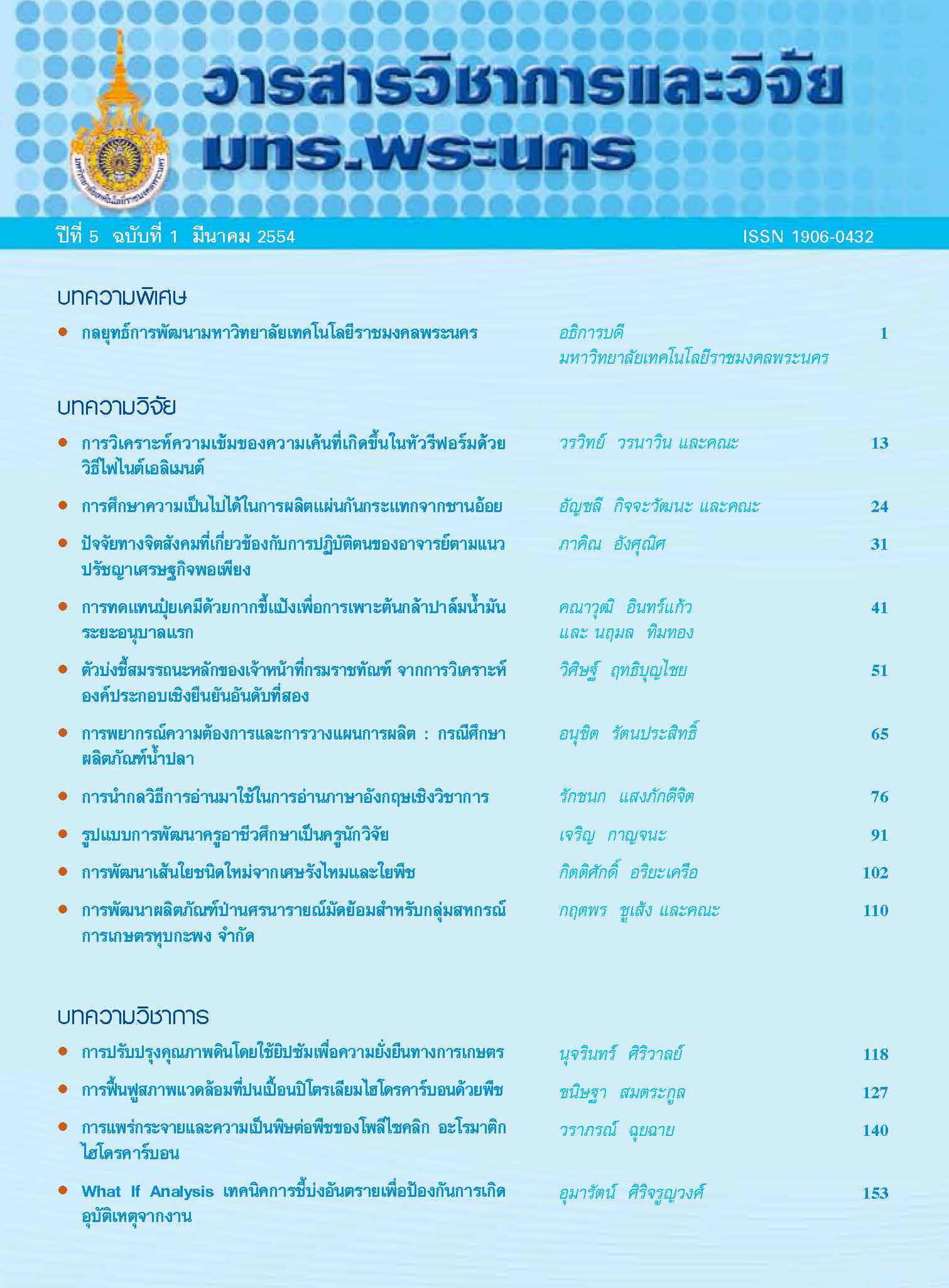ตัวบ่งชี้สมรรถนะหลักของเจ้าหน้าที่กรมราชทัณฑ์ จากการวิเคราะห์องค์ประกอบเชิงยืนยันอันดับที่สอง
Main Article Content
Abstract
บทคัดย่อ
การวิจัยครั้งนี้มีวัตถุประสงค์เพื่อค้นหาตัวบ่งชี้สมรรถนะหลักของเจ้าหน้าที่กรมราชทัณฑ์ ผู้วิจัยเก็บข้อมูลจากประชากร เจ้าหน้าที่ และผู้บริหารกรมราชทัณฑ์จำนวน 11,437 คน ใช้สูตรคำนวณหาขนาดของกลุ่มตัวอย่างแบบประมาณสัดส่วน ตามสูตรของทอมสัน ที่ความเชื่อมั่นร้อยละ 95 ได้ขนาดกลุ่มตัวอย่างเท่ากับ 372ตัวอย่าง แต่เพื่อป้องกันปัญหาการตอบข้อคำถามที่ไม่สมบูรณ์ผู้วิจัยจึงเพิ่มขนาดกลุ่มตัวอย่างขึ้นอีกร้อยละ 10 ได้ขนาดกลุ่มตัวอย่างที่ต้องการทั้งสิ้น 410 ตัวอย่าง ใช้วิธีการสุ่มตัวอย่างโดยใช้ทฤษฎีความน่าจะเป็น โดยเทคนิคการสุ่มแบบแบ่งชั้น สามารถเก็บข้อมูลได้ครบ 410 ชุด การวิเคราะห์ใช้เทคนิคการวิเคราะห์เชิงปริมาณ โดยอาศัยการวิเคราะห์องค์ประกอบเชิงยืนยันอันดับที่สองด้วยโปรแกรมลิสเรล ผลการวิจัย พบว่า องค์ประกอบตัวบ่งชี้สมรรถนะหลักของเจ้าหน้าที่กรมราชทัณฑ์ เกิดจากสมรรถนะในด้านการจัดการ มากที่สุด รองลงมา คือ ด้านความเป็นผู้นำ และด้านใฝ่สัมฤทธิ์ในงาน ตามลำดับ
คำสำคัญ : สมรรถนะหลัก; กรมราชทัณฑ์; การวิเคราะห์องค์ประกอบเชิงยืนยันอันดับที่สอง
Abstract
This research objective is to find Core Competency Indicator of the Departmentof Corrections’ Employees The researcher collects data from those of 11,437 employees andexecutives of the Department of Corrections. A proportion Sampling of to the method ofThompson is used to define sample size. At 95% level of confidence, the sample size is equal to372 samples but the researcher puts more 10% to the sample size in order to avoid problem ofincomplete answers and gets 410 samples as a target. The Probability Sampling is used throughthe technique of Stratified random sampling. Finally, 410 surveys are collected. The quantitativeanalysis is used, through the Second Orders Factor Analysis by LISREL Program. The finding ofresearch is that Core Competency Indicator of the Department of Corrections’ Employees derivesfirstly from Managerial Competencies, secondly from Leadership Competencies, and lastly fromTask Achievement Competencies.
Keywords : Core Competencies; The Department of Corrections; The Second Order FactorAnalysis


